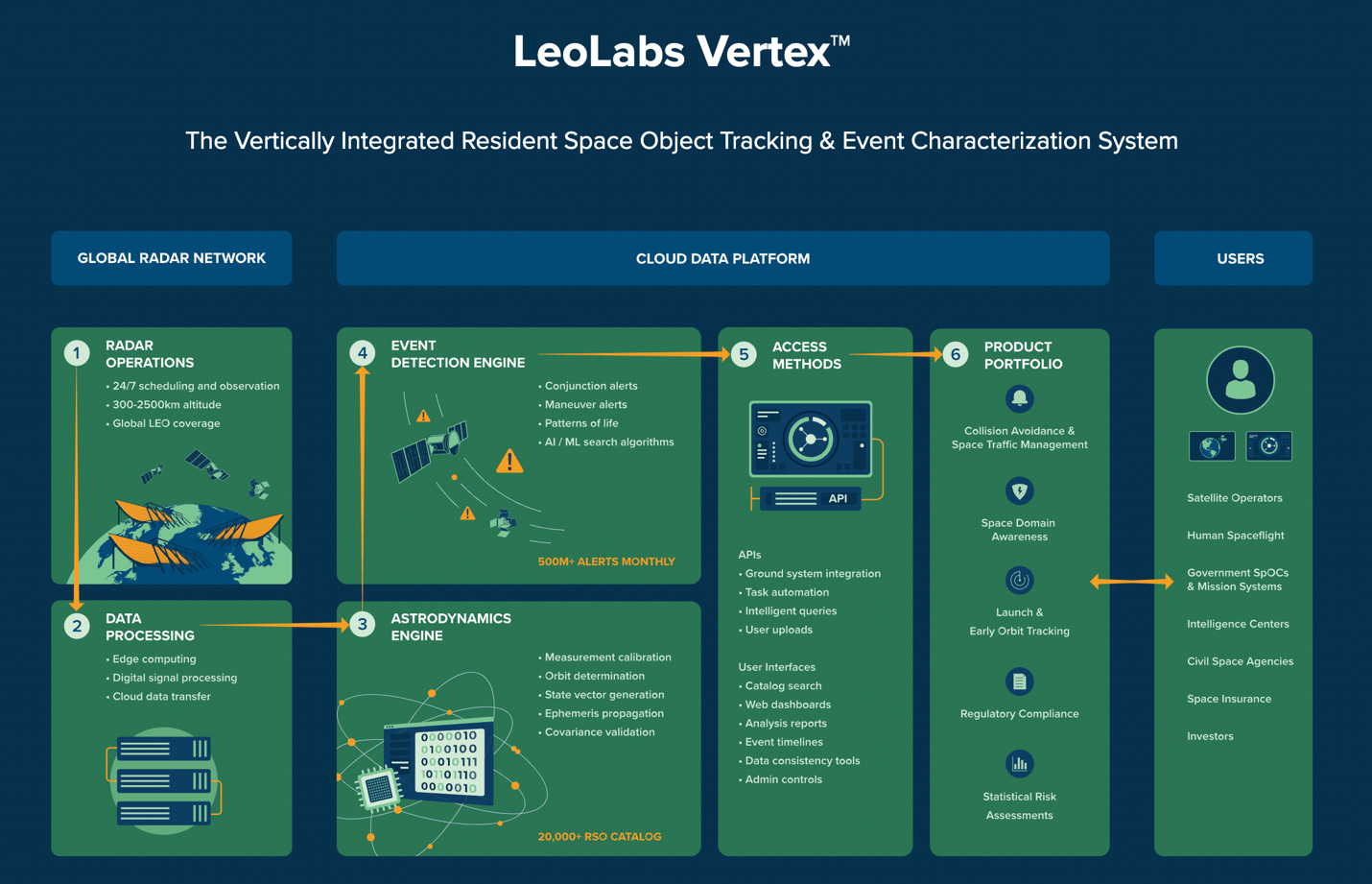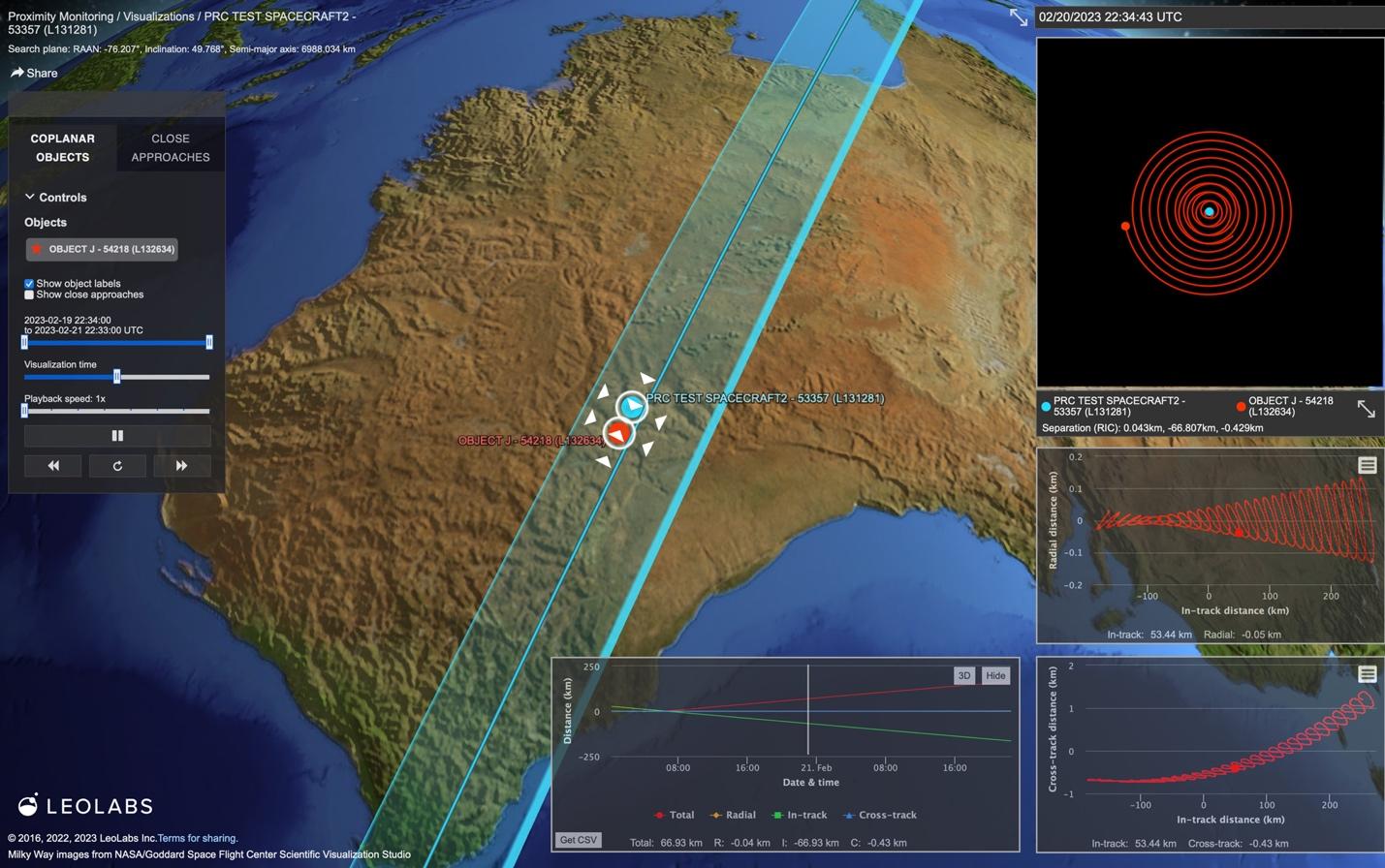In fact, it took almost 50 years to add 10,000 cataloged objects to LEO; it took just 15 to add an additional 10,000 — bringing the total cataloged objects to over 20,000 in late 2021. While operational payloads accounted for most of this growth, ~70% of objects in LEO are still space debris.
This growth will only increase in the next five to ten years. While exciting, new challenges are emerging — from increased on-orbit collision risk to evolving national security threats.
Unfortunately, the existing data infrastructure the space industry has relied on for decades wasn’t built for this rapidly changing environment. For regulators and operators, this begs the question: How do we improve and augment these systems to keep space safe? For security agencies, the question is: Can our existing capabilities outpace the growing threats in space?
The co-founders at LeoLabs, including current CEO Dan Ceperley and CTO Ed Lu (former NASA astronaut), noticed this issue early on and in just seven years, built an infrastructure that can iterate and scale with today’s dynamic space era.
LeoLabs, and its subsidiary, LeoLabs Australia, sit apart from both competitors and existing systems by providing superior information in three critical areas: coverage, speed, and insights. These features are made possible through LeoLabs Vertex™, their vertically integrated space operations system that’s transforming the way satellite operators, commercial enterprises, and federal agencies launch and track missions in LEO.

This system consists of a comprehensive suite of services and products, including:
- LeoSafe — tailored collision avoidance service provides real-time conjunction alerts to ensure operational safety of flight for your mission
- LeoTrack — foundational satellite tracking service enabling automated, independent monitoring for fleets of any size
- LeoRisk — comprehensive mission risk assessment service ideal for intelligent business planning; serving insurers, investors, and owner-operators
- LeoClear — only service providing on-demand screening of launch vehicle ephemerides against a dynamic object catalog
- LeoLaunch — the first and only on-console support service proven to quickly locate and identify newly launched payloads
Powering this product suite is LeoLabs’ global network of phased-array radars which track tens of thousands of satellites, rocket bodies and debris fragments in LEO daily. As of early 2023, LeoLabs maintains and operates 10 independent radars across six sites, including the West Australian Space Radar (WASR) located in Collie Shire, Western Australia.
Th WASR radar site, commissioned in January 2023, meets a strategic need for increased space surveillance in the Southern Hemisphere. As space-based activities increase in the Indo-Pacific region specifically, this coverage will become increasingly critical for national agencies and regulators. In 2022, LeoLabs Australia, led by Managing Director Terry van Haren (RAAF Air Commodore, ret'd), took over the operational management of this system during the Indo-Pacific daytime hours to support global operations and provide critical, real-time analysis. In fact, they did so recently when data provided by the Kiwi Space Radar (located in New Zealand) and WASR indicated that the PRC Test Spacecraft2 (NORAD ID 5337) had released a payload for unknown reasons. This data and analysis were quickly relayed to LeoLabs’ customers and relevant stakeholders.

LeoLabs and LeoLabs Australia have assisted in enabling Australia to become an integral, global player in the fields of Space Situational Awareness and Space Traffic Management. By capitalizing on the shared values of trust and empowerment between Australia and the United States, both organizations will continue to drive transparency in LEO to promote sustainability, security, and safety as today’s dynamic space era continues.
We’re bringing clarity to today’s dynamic space era. Join us.

